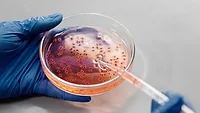EU, China Form Consortium on Safe Food for Infants

Credit: RapidEye/E+ via Getty Images
Researchers associated with the Safe Food for Infants in the EU and China (SAFFI) consortium recently published three papers in Global Pediatrics addressing health hazards in infant foods. The first paper sets forth a model for hazard identification and risk ranking, and serves as a proof-of-concept for the SAFFI project. The second paper identifies microbial and chemical hazards in infant foods. The third paper explores new and emerging processing and preservation technologies, as well as describes how SAFFI is addressing the research to control several prominent hazards in infant foods.
SAFFI focuses on foods for children under the age of three throughout the EU and China. Its goals are to benchmark the main safety risks of infant foods under its purview, create hazard control procedures, develop a decision support system for stakeholders to use to enhance safety control throughout the food chain, and initiate information-sharing and training to harmonize infant food safety approaches in China and the EU.
Safe Food for Infants: An EU-China Project
In the first paper, SAFFI notes the difficulty of implementing efficient food safety controls globally due to: the variety of products that exist based on the diversity of raw materials, processing, packaging, and storage; the ever-changing and unpredictable nature of consumer practices; continuous product evolution driven by agri-food innovations, advances in human health knowledge, and regulatory changes; and the different regulations and health surveillance systems that exist worldwide. SAFFI stresses the urgency of navigating the complex task of ensuring infant food safety in light of recent public health challenges caused by unsafe infant foods. SAFFI also states that the public expects the infant food sector to adhere to the highest safety standards and be subject to strong regulation.
SAFFI chose four infant food chains as case studies to target the control of priority infant food hazards. Powdered infant formula, sterilized vegetable mixed with fish or meat, infant cereals, and fruit puree were the chosen food chains. The food chains were selected as they cover a variety of hazards, ingredients, processing, and control steps. The main priority infant food hazards were identified by the French Infant Total Diet Study, and include chemical and microbiological hazards that originate from various points in the food chain.
The paper exemplifies how SAFFI’s research can help pediatricians and other infant food actors better understand infant food safety hazards along the food chain, provide tools to combat such hazards, anticipate unknown risks, prevent public health crises, and foster knowledge-sharing. Key work areas discussed in the paper are:
- Enhancement of food risk assessment
- Enhancement of infant diet quality with innovative food processing technologies
- Enhancement of the surveillance of chemical hazards
- Enhancement of microbial hazard characterization, detection, and risk assessment
- Enhancement of infant food safety standards.
Microbial and Chemical Hazard Identification in Infant Food Chains
The second paper seeks to identify relevant hazards in infant foods. SAFFI collected data from literature, scientific reports, databases, and clinical studies. Hazards included in SAFFI’s list have caused major foodborne illness outbreaks, frequently contaminate foods, have large public health ramifications, or are dangerous to young children.
Looking for quick answers on food safety topics?
Try Ask FSM, our new smart AI search tool.
Ask FSM →
In total, SAFFI identified 32 microbial hazards consisting of bacteria, viruses, parasites, and protozoa. SAFFI also identified nine families of chemical hazards consisting of persistent organic pollutants, trace elements and metals, pesticide residues, mycotoxins, substances migrating from food contact materials, heat-induced compounds, phytoestrogen, ionic compounds, and food additives.
Hazard Control Through Processing and Preservation Technologies
The third paper addresses the control of three categories of hazards to infant food safety—furan, tropane alkaloids, and vegetative and spore-forming bacterial pathogens—by setting forth and validating new or emerging processing and preservation technologies. New and emerging infant food processing technologies outlined in the paper include pulse combustion drying, radiofrequency, and high-pressure processing.
SAFFI states that the Hazards Analysis and Critical Control Points (HACCP) framework allows for flexibility in the selection of controls that are employed. However, the validation and verification of new and emerging control methods can be costly and time-consuming. The various infant food processing technologies outlined in the paper are undergoing validation as part of a SAFFI work package funded by Horizon Europe 2020. The work package will also include a decision support system for hazards control.









